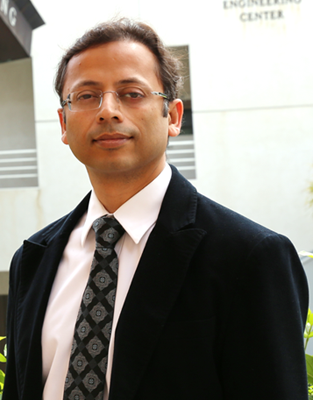EECS Researchers Win IEEE Award
 Jan. 29, 2019 - Samueli School professor Syed Jafar and his doctoral student Arash Gholami Davoodi (who graduated last year and is now a postdoctoral researcher at Carnegie Mellon University) have won the 2018 IEEE Communications Society and Information Theory Society Joint Paper Award.
Jan. 29, 2019 - Samueli School professor Syed Jafar and his doctoral student Arash Gholami Davoodi (who graduated last year and is now a postdoctoral researcher at Carnegie Mellon University) have won the 2018 IEEE Communications Society and Information Theory Society Joint Paper Award.
The award, which consists of a plaque and an honorarium, is given annually for outstanding papers relevant to both societies, which have been published in any publication of either society in the previous three calendar years. Jafar and Davoodi’s winning paper appeared in the October 2016 issue of IEEE Transactions Information Theory.
The paper settles an intriguing mystery regarding the fundamental limits of wireless networks, says Jafar, professor of electrical engineering and computer science. That unknown? What is the impact on network performance when transmitters are uncertain about the state of the channels through which signals propagate?
The condition of these channels can affect the signals they are carrying; when the transmitter “knows” the state of the channel, it adapts signal design accordingly. These counter-measures can lead to designs that allow huge data rate improvements, such as a concept known as interference alignment, Jafar’s design that enables each user to access half of available network capacity, no matter how many users there are.
But when transmitters are unclear about the state of these channels, network performance suffers.
“Our work studies what happens when the transmitters are not 100 percent certain about this ‘state,’ Jafar says. “We show that even a little bit of uncertainty is catastrophic for concepts like interference alignment and other ‘miracle’ schemes.”
The paper introduces a new combinatorial bounding technique based on aligned images (AI). “It is somewhat serendipitous that IA and AI turn out to be the keys to complementary problems,” Jafar says. “Together these ideas close arguably the largest gaps in our understanding of the capacity limits of wireless networks.”
– Anna Lynn Spitzer
